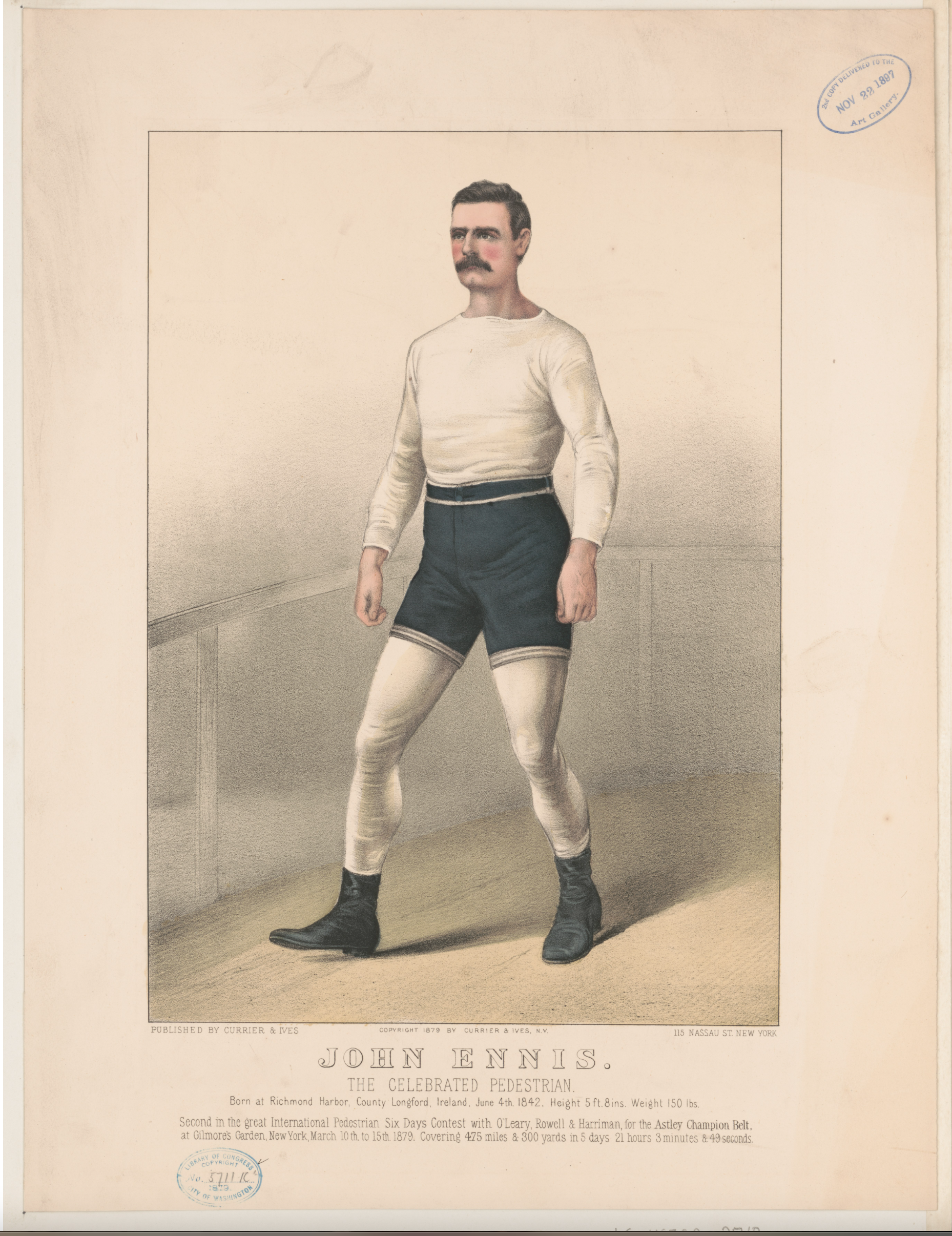Marathon Man
Coney Island Museum Collection
Set against the backdrop of Luna Park’s fairytale architecture, a crowd of well-wishers and a brass band are assembled. A banner proclaims, “Mr. John Ennis Starts From Luna Park On His Walk Across The Continent”. At the center, an older gentleman, a bit gaunt and slightly rumpled, looks into the camera as he shakes the hand of an official. Was this a simple publicity stunt, or a more substantiative event?
Historically, a bit of both.
John T. Ennis (1842-1929), was an Irish immigrant who came to America as a young man, settling first in Chicago, and later in Stamford CT. A carpenter by trade, and an avid outdoorsman, he soon developed a keen interest in a newly popularized sport — competitive walking.
Originating in England, “pedestrianism” became popular in the U.S. after the Civil War. By that time, it was already a high-stakes sport in England, where fans passionately cheered for their favorite participants in both timed and long-distance endurance trials. As in modern popular sports, many of these athletes enjoyed hefty corporate sponsorships, and races were often plagued by accusations of game-fixing, cheating, and doping. Celebrity pedestrians were tagged with nicknames by their fans or detractors; some employed unusual gaits that were adopted by their followers. And although they competed separately, women “pedestriennes” were as popular as their male counterparts.
Photo Courtesy of the Henry Ford Collection
Back to John Ennis.
American long-distance races were typically 100 mile courses. However, in 1875, British sports impresario Sir John Astley created the first six-day Long Distance Championship of the World, where competitors spent 6 days continually walking an indoor oval track (with brief “pit stops”) to win what would become the coveted “Astley Belt”. At that time, John Ennis was finding success and recognition in the US as a competitive walker, winning numerous long distance races. In 1878, he was invited by Astley to travel to England to enter the International Pedestrian Match for the World Championship. Ennis competed, but finished a disappointing fifth, at 410 miles.
Eventually, standardized rules and regulations were established, and over time, pedestrianism morphed into modern racewalking.
Despite his failure to bring the Astley Belt home to America, Ennis continued to compete in long distance pedestrian races. He was also a talented endurance ice skater; in 1876, he skated150 miles in an incredible 18:43.
Right: John Ennis, The Celebrated Pedestrian; Artist: Currier & Ives
In 1910, Ennis set out from Luna Park on his transcontinental walk, determined to one-up his longstanding American rival, Edward Weston. He completed his journey from New York to San Francisco in 81 days, beating Weston’s record by 23 days.
Above:: Brooklyn Daily Eagle, July 16, 1910
Left: New York Times, June 5, 1926
In 1908, John Ennis was hailed as a hero after saving two young men, Robert Carlin and Howard Lewis, from drowning in the Rippowam River in Connecticut. Lewis had broken through the ice while skating, and Carlin, who attempted to save him, had also fallen In.
The sixty year old Ennis was skating on the river, and immediately rushed to aid them. Though he also fell through the ice, he was able to successfully rescue the boys.
The crowd cheered Ennis. Apparently, it was the thirteenth time he had saved persons from drowning.
John Ennis continued to compete and participate in outdoor activities well into his eighties.








